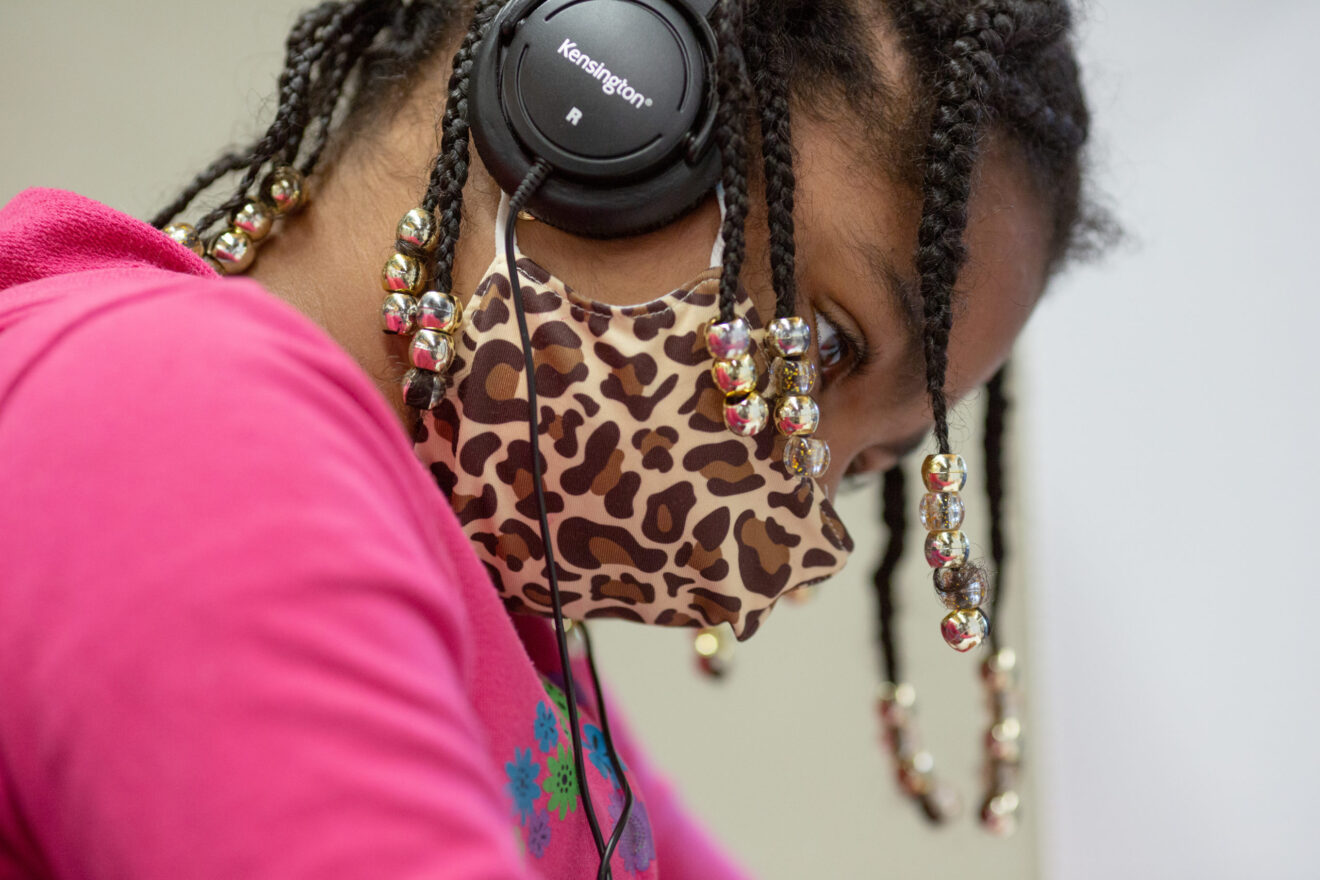The news has not been good for public school districts. This past fall, the results from the “Nation’s Report Card,” the National Assessment of Educational Progress, painted a bleak picture of pandemic learning loss. And just before that news broke, survey data revealed that the downward trend in district enrollment has continued even since schools reopened their doors.

With all this and more on their plates, it’s no wonder that many districts aren’t focusing on reinventing schools but instead are just seeking to get back to some semblance of normalcy. Efforts like personalizing learning for each student might feel superfluous or even like a distraction and headache.
But the opposite is true. It’s never been more urgent for districts to begin personalizing learning for each child — to deliver every student the right learning at the right time to accelerate their progress.
This new year, districts can’t rely on old strategies
To be fair to school districts, the instinct to try and get back to business as usual isn’t abnormal or distinct from other sectors.
When organizations face a significant threat, research shows that framing it as such is helpful to marshal significant resources to meet the challenge. In schools, labeling the challenges students have faced since the pandemic as “learning loss” and calling out the significant mental health challenges they face has helped bring in billions of dollars over the course of the pandemic.
But that same research revealed something else as well. When organizations continue to frame a challenge as a threat, they respond with something called “threat rigidity.” When this happens, organizations avoid innovating and double down on existing practices instead.
This is precisely what many schools have done. Prior to buildings reopening, many used education technology to re-create old structures and schedules in the remote environment. Districts are now extending their school days and academic calendars to remediate learning loss with higher doses of traditional schooling.
The problem is that the traditional model of schooling, which holds time spent on a concept as a constant and each student’s mastery of that concept as variable, is not optimized for learning or for each student’s success. This was true prior to the pandemic as well.
Because this time-based model embeds failure for many students, the model won’t suffice to bridge the expansive learning gaps that students are facing. Districts must target instruction to the specific needs of each student by personalizing learning — or else they can expect families to continue seeking out alternative schools that do.
Personalizing learning offers path to accelerating learning, retaining students
Changes brought about by the pandemic have, in many ways, created an environment primed for personalizing learning. Parents are more open to alternative schooling models, more districts have equipped students with devices, and many still have COVID-19 relief funds in the bank. One of the preferred school interventions in this moment — high-dosage tutoring — ironically also revolves around leveraging the power of personalization.
To make the most of this moment, however, districts will have to overcome the impulse to retreat to the familiar in the face of uncertainty and frame the work ahead as an opportunity. Simply tacking tutoring on top of a flawed, time-based model won’t suffice. Instead, personalization and individual student mastery must be the centerpiece of an effort to reinvent schools.
That’s because as students return to the classroom, they do so with far more wide-ranging needs, both academically and emotionally. Tailoring learning opportunities and support is the only way schools can reach each student.
Even before the pandemic, for example, research from NWEA showed that the average fifth-grade classroom contained students achieving at seven different grade levels. Roughly two-thirds of students performed below grade level, a quarter were on par and the rest were above.
The pandemic and our response have exacerbated the spread. NWEA data now suggest that the span of levels in any given fifth-grade math classroom has likely widened to nine grade levels. Without personalization, the chances of helping students succeed are slim.
Personalizing learning: A success story
NYOS Charter School in Austin, Texas, took steps to address the various needs of its learners before the pandemic through personalization. The school reconfigured schedules and spaces so students could move on from material at their own pace as they mastered it. The results speak for themselves: In the 2018–19 school year, every grade level at NYOS met or exceeded state and district averages in both reading and math. On Texas’s state report card, the school earned 96 out of 100 points for student achievement and 100 out of 100 for closing achievement gaps.
NYOS’ story holds lessons for districts aiming to address their students’ learning needs.
Leaders across all school types are grappling with learning loss, but enrollment decreases have been concentrated in traditional school districts. The pandemic accelerated the downward trend in district enrollment, and it has persisted since students have returned to the classroom. Between spring 2021 and spring 2022, public school districts saw a 9% decrease in enrollment.
Less than 10% of the decrease is because of declining demographics, delayed entry into school by kindergarteners or dropout rates. The majority are exiting to enroll in charter, private or home-schools, which signals that families are dissatisfied with the service districts are providing. The survey showed that parents were most displeased with the lack of personalized learning experiences in districts.
Indianapolis Public Schools has historically bucked this enrollment trend by creating schools with more latitude to provide personalized learning experiences. IPS’s Innovation Network Schools were created by a 2014 statute that exempted them from certain requirements concerning uses of funds, the length of the school day, class size and the uses of in-class technology. This has enabled them to create more student-centered learning environments.
In 2019–20 and 2020–21, district enrollment nationwide experienced back-to-back annual decreases but Indianapolis Public Schools’ enrollment grew by 2%. This net increase consisted of a 42% enrollment increase in Innovation Network Schools and a 15% drop in enrollment for their more traditional school counterparts.
Don’t pass up the opportunity offered by personalizing learning
Those districts able to see past the challenge and uncertainty of the present moment will find that it is also filled with opportunity. Families, removed from the habit of traditional schooling over the pandemic, are increasingly open to alternative models of education. The share of districts with one-to-one device programs spiked with the move to remote instruction. And many districts are still awash in federal funds that could help pay the startup costs of shifting to personalized learning.
Districts must move to seize this opportunity. This means meeting parents’ calls for personalized learning experiences while they are top of mind; providing teachers and leaders with the training, flexibility, and curriculum to use their new devices to target student needs; and making investments with remaining federal funds that power personalized models for years to come.
While making such an innovative change can be daunting, the status quo presents a much greater threat to districts — and, more importantly, their students.
Michael Horn is co-founder of the Christensen Institute.
Daniel Curtis, is a master in public policy candidate at the Harvard Kennedy School of Government.
Opinions expressed by SmartBrief contributors are their own.
_________________________
Subscribe to SmartBrief’s FREE email ASCD newsletter to see the latest hot topics in education. It’s among SmartBrief’s more than 250 industry-focused newsletters.
